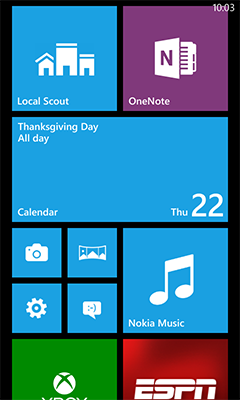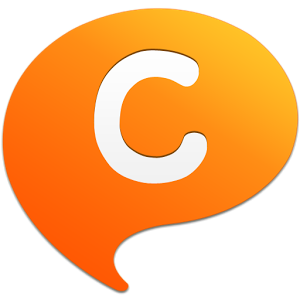
Near-field communication (NFC) is a set of communication protocols that enables communication between two electronic devices over a distance of 4 cm (1.57 in) or less. NFC offers a low-speed connection through a simple setup that can be used to bootstrap more capable wireless connections. Like other "proximity card" technologies, NFC is based on inductive coupling between two antennas present on NFC-enabled devices—for example a smartphone and a printer—communicating in one or both directions, using a frequency of 13.56 MHz in the globally available unlicensed radio frequency ISM band using the ISO/IEC 18000-3 air interface standard at data rates ranging from 106 to 848 kbit/s.

Android 13 is the thirteenth major release and the 20th version of Android, the mobile operating system developed by the Open Handset Alliance led by Google. It was released to the public and the Android Open Source Project (AOSP) on August 15, 2022. The first devices to ship with Android 13 were the Pixel 7 and 7 Pro.

The Nexus S 4G is a smartphone co-developed by Google and Samsung and manufactured by Samsung Electronics for release in 2010. It was the first smartphone to use the Android 2.3 "Gingerbread" operating system, and the first Android device to support Near Field Communication (NFC) in both hardware and software.

Android Ice Cream Sandwich is the fourth major version of the Android mobile operating system developed by Google. Unveiled on October 19, 2011, Android 4.0 builds upon the significant changes made by the tablet-only release Android Honeycomb, in an effort to create a unified platform for both smartphones and tablets. The first phone with Android Ice Cream Sandwich was Samsung Galaxy Nexus.

The WIMM One is a developer device for the WIMM platform produced by WIMM Labs. It is a wearable computing device running a modified version of the Android operating system. It comes preloaded with several apps. Additional applications can be downloaded from the micro app store or side-loaded over USB.

Windows Phone 8 is the second generation of the Windows Phone mobile operating system from Microsoft. It was released on October 29, 2012, and, like its predecessor, it features a flat user interface based on the Metro design language. It was succeeded by Windows Phone 8.1, which was unveiled on April 2, 2014.

ChatON was a global mobile communication service introduced by Samsung Electronics in September 2011. ChatON served more than 120 countries in 62 languages. ChatON was available on Android, iOS, BlackBerry, Windows Phone, Windows Mobile (Korea), and Bada smartphones. Additionally, a web client was offered for access to the service via web browsers. Users could invite and register buddies via Facebook and Twitter as well as share ChatON content on Facebook. Among ChatON's unique features were allowing users to create Animation messages, Broadcast to send personal notices in a group chat room, and the Trunk which stores media files shared in chats. When a user logs in ChatON, the user's buddy list is available on any connected device.

Android Jelly Bean, or Android 4.1 is the codename given to the tenth version of the Android mobile operating system developed by Google, spanning three major point releases. Among the devices that run Android 4.1 to 4.3 are the Nexus 7 (2012), Nexus 4, Nexus 10 and Nexus 7 (2013).
Miracast is a wireless communications standard created by the Wi-Fi Alliance which is designed to transmit video and sound directly from devices to display receivers. It can roughly be described as "HDMI over Wi-Fi", replacing cables in favor of wireless. The protocol has been utilised in many devices and has been branded under various names by different manufacturers, including Smart View and AllShare Cast, SmartShare, screen mirroring, wireless display and screen casting.

The Samsung Galaxy S4 is an Android smartphone produced by Samsung Electronics as the fourth smartphone of the Samsung Galaxy S series and was first shown publicly on March 14, 2013, at Samsung Mobile Unpacked in New York City. It is the successor to the Galaxy S III, which maintains a similar design, but with upgraded hardware, more sensors, and an increased focus on software features that take advantage of its hardware capabilities—such as the ability to detect when a finger is hovered over the screen, and expanded eye tracking functionality, it was released the previous year. A hardware variant of the S4 became the first smartphone to support the emerging LTE Advanced mobile network standard. The T-Mobile version of the Galaxy S4, named the model (SGH-M919), was released the same month. The phone's successor, the Samsung Galaxy S5, was released the next year.

HTC One is a touchscreen-based Android smartphone designed, developed, and manufactured by HTC. The smartphone was unveiled on 19 February 2013 at press events in New York City and London and is HTC's seventh flagship smartphone. It has been hailed by many as a revolutionary Android handset with its premium design and build quality and its emphasis on high end audio. It is the successor to the company's 2012 flagship model, the One X—which was critically acclaimed, but commercially unsuccessful due in part to insufficient marketing efforts. To make the device stand out among its competition, HTC One was developed with a major emphasis on unique hardware and software features; which included a unibody aluminum frame, a 1080p full-HD display, dual front-facing stereo speakers, a camera with a custom image sensor and the ability to automatically generate montages of media, an updated version of HTC's Sense user experience, BlinkFeed—an aggregator of news and social network content, and an electronic program guide app with the ability to serve as a universal remote via an IR blaster located in the device's power button.
Payanywhere is a payments platform and app that allows merchants in the United States to accept credit and debit card payments while building customer relationships in-store, online, or on the go. Merchants may accept payments on their smartphone via a Bluetooth card reader or on an in-store “Storefront” solution featuring a tablet and stand, which was introduced on April 8, 2014. PayAnywhere offers credit card readers and apps that are compatible with both Apple and Android devices.
The Samsung Galaxy Express (GT-I8730) is a smartphone made by Samsung which was launched in March 2013 in India featuring a similar design to the Galaxy S Duos but with additional features such as 4G LTE, NFC. It also features a bigger 4.5-inch screen with Super AMOLED Plus and retains all the features which the Samsung Galaxy S III phone has.

The Samsung Galaxy Gear is a smartwatch produced by Samsung Electronics in the Samsung Gear family of devices. Unveiled during a Samsung Unpacked event in Berlin, Germany on September 4, 2013, the device serves as a companion for all Samsung Galaxy smartphones and tablets which runs on Android 4.3 "Jelly Bean" or newer. It was released on September 25, 2013. Originally released as an Android-based device, Samsung replaced the operating system with Tizen through the May 2014 software update.
The Samsung Galaxy Express 2 (SM-G3815) is a smartphone made by Samsung which was launched in October 2013 featuring a similar design and specifications of the Samsung Galaxy S4 Mini but with a bigger 4.5 inch screen and different cameras.

Android Lollipop is the fifth major version of the Android mobile operating system developed by Google and the 12th version of Android, spanning versions between 5.0 and 5.1.1. Unveiled on June 25, 2014 at the Google I/O 2014 conference, it became available through official over-the-air (OTA) updates on November 12, 2014, for select devices that run distributions of Android serviced by Google. Its source code was made available on November 3, 2014. The first phone with Android Lollipop was the Nexus 6.

Phone Link, previously Your Phone, is an app developed by Microsoft to connect Windows 10 and Windows 11 PCs to Android and iOS devices. It enables a PC to access the 2000 most recent photos on a connected phone, send SMS messages, and make phone calls. As part of the Windows 10 October 2018 Update (1809), it replaced the legacy Phone Companion app. Phone Link can also be used to mirror the screen of an Android device; however this feature is currently only available on select devices with the Link to Windows service pre-installed. The app also has a cross-device copy and paste feature allowing users to send copied text and images between devices using the same copy and paste shortcuts on each device.

Messages is an SMS, RCS, and instant messaging application developed by Google for its Android and Wear OS mobile operating systems, while it's also available via the Web. Messages is Google's official universal messaging platform for the Android ecosystem, similar to the implementation of iMessage on Apple devices.

Nearby Share is a service developed by Google that allows data to be transferred between devices via Bluetooth and Wi-Fi. It is available on their mobile and desktop operating systems, Android and ChromeOS, as well as Microsoft's Windows. Nearby Share uses Bluetooth, Bluetooth Low Energy, WebRTC, UWB, and peer-to-peer Wi-Fi to allow users to share files and links between devices. It was first released on August 4, 2020.















